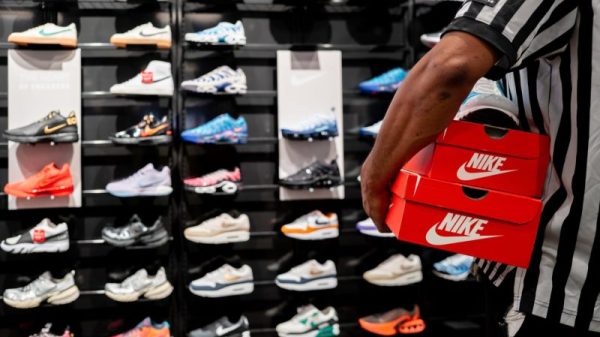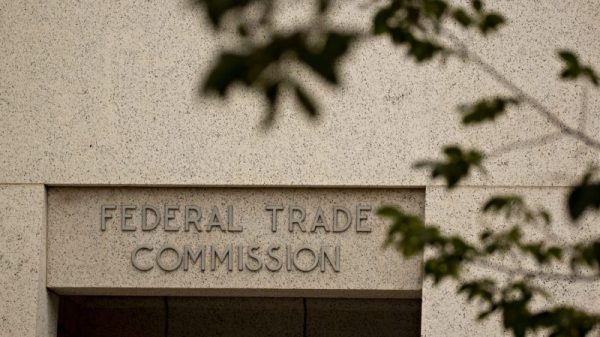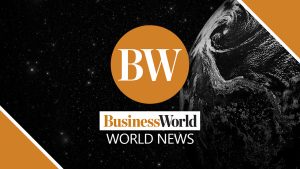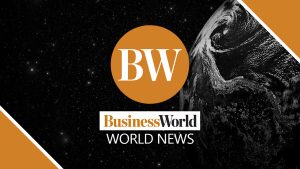WASHINGTON — The US economy likely continued to grow at a solid clip in the first quarter (Q1), driven by strong consumer spending at the beginning of the year, but momentum appears to have since waned considerably as the effects of higher interest rates spread.
The Commerce Department’s advance first-quarter gross domestic product (GDP) report on Thursday will probably show the economy nowhere near a recession. But the economic landscape is now vastly different. Credit conditions have tightened following recent financial market turmoil, which together with the Federal Reserve’s fastest rate hiking cycle since the 1980s have raised the risks of a downturn by the second half of the year.
Following January’s surge, which economists attributed to unseasonably mild weather and difficulties adjusting the data for seasonal fluctuations, economic reports have taken a weaker tone, with retail sales slumping in February and March.
“It is worth considering where the momentum is at the end of the quarter,” said Will Compernolle, macro strategist at FHN Financial in New York.
According to a Reuters survey of economists, GDP growth likely increased at a 2.0% annualized rate last quarter after rising at a 2.6% pace in the fourth quarter. Estimates ranged from a growth rate of 0.4% to a 3.3% pace.
The pace of growth remains above the economy’s potential, keeping the US central bank on track to raise interest rates by another 25 basis points (bps) next week. The Fed has hiked its policy rate by 475 bps since last March from the near-zero level to the current 4.75%-5.00% range.
The survey was, however, conducted before the Commerce Department published its annual revisions to retail sales data this week, which showed sales not as robust as previously estimated in January. Retail sales in February were much weaker than previously reported.
In addition, orders for non-defense capital goods excluding aircraft, a closely watched proxy for business spending plans, fell for a second straight month in March, the Commerce Department reported on Wednesday.
DOWNSIDE RISK
Some institutions cut their GDP growth estimates, with Wells Fargo slashing its forecast by a full percentage point.
“If our interpretation of the latest revisions is correct, then real GDP growth for the first quarter could come in at half the growth rate that is presently expected by the consensus,” said Jay Bryson, chief economist at Wells Fargo in Charlotte, North Carolina.
Still, consumer spending is expected to have grown at a pace faster than the pedestrian 1.0% rate logged in the fourth quarter. Consumer spending, which accounts for more than two-thirds of US economic activity, is expected to be driven by demand for services. It continues to be underpinned by a tight labor market, characterized by a 3.5% unemployment rate.
A separate report from the Labor Department on Thursday is expected to show initial claims for state unemployment benefits rising to a seasonally adjusted 248,000 last week from 245,000 the prior week, according to a Reuters survey.
Though claims, which have increased since March, remain well below levels that could raise alarm about the labor market, reduced access to credit for business and households is seen hurting demand and ultimately employment.
Business investment in equipment is expected to have contracted for a second straight quarter. It has been hamstrung by higher borrowing costs, which have crimped demand for goods.
“The impact on GDP from an accounting perspective may be modest, but more important could be the signal capex is sending about the overall posture of business behavior, including as it relates to labor demand,” said Michael Feroli, chief US economist at JPMorgan in New York.
The housing market likely remained mired in recession, with residential investment forecast to have contracted for an eighth straight quarter. The pace of decline is, however, expected to have slowed relative to the fourth quarter.
Some economists argued that fears of a recession were pushing down prices of commodities like oil, which could help to reduce cost pressures for businesses and benefit the overall economy. Oil prices have erased all their gains since the Organization of the Petroleum Exporting Countries and producer allies such as Russia announced in early April an additional output reduction until the end of the year.
“The reduction in commodities and energy prices will be sufficient to keep us from falling into a recession,” said Brian Bethune, an economics professor at Boston College. “There’s a higher probability now that we can get to a soft landing than at the end of 2022, it’s not like we are falling out of bed here.” — Reuters































